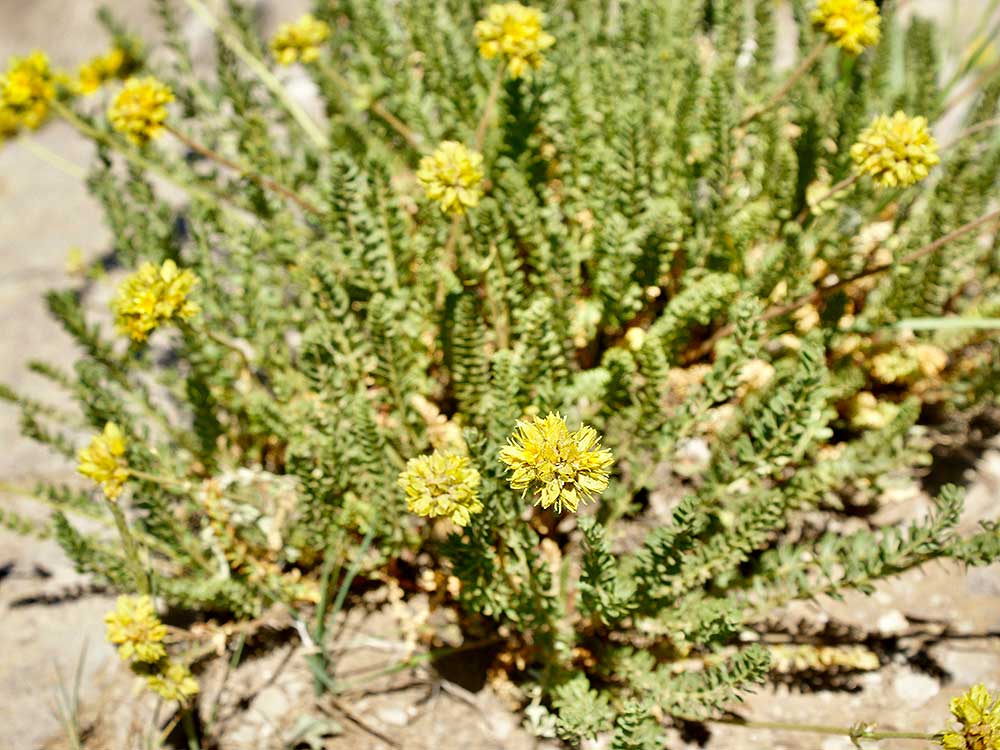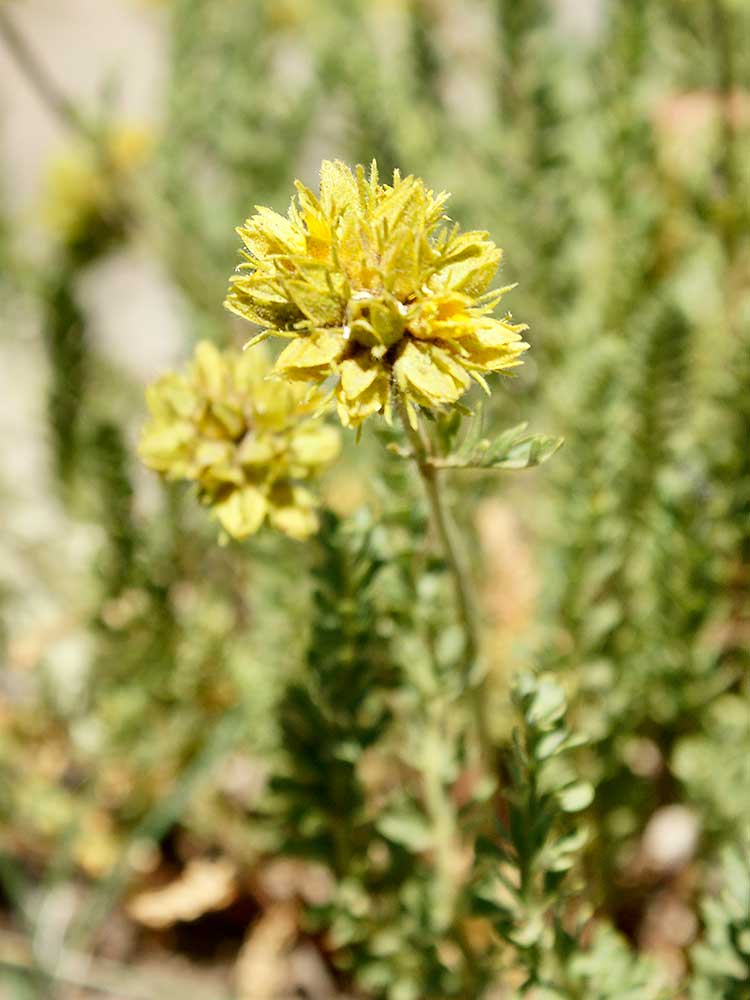Ivesia gordonii / Gordon’s mousetail
- subalpine to alpine
- low, on shallow, rocky soils
- individual stalks are leaves with ~20 overlapping lobes
- clusters of teeny yellow flowers on naked stems
Also known as: alpine ivesia
Synonyms: Horkelia gordonii, Potentilla gordonii
Gordon’s mousetail is a little, tufted perennial, occurring mostly at high altitudes on dry, shallow-soiled rocky ridges and talus slopes, often in tundra-like conditions. It grows to a foot high. The shoots are herbaceous, i.e. they die back each year, and rise again from a thick, woody rootstock.
Gordon’s mousetail shoots are a clump of erect stems and tail-like leaves, hence the name. Each leaf is a thick, rounded strip of small, green, lobed leaflets which overlap. The lower leaves are 1-3″ long with many small lateral leaflets crowding in pairs along the stems. This is as confusing as the photos look, since other sources say there are many (e.g. 20 pairs) of overlapping lobes partly wrapping around the stems. So in the photos, each “stem” is actually a single leaf.
There are also thin, naked stems—ranging in height from about 2-10 inches—which support hairy, glandular inflorescences of clustered yellow flowers. Each inflorescence has 10 to 20 flowers, each about ¼ across. The petals are small and oval, or “pointy-oval”, or spoon-shaped. Each flower has 5 yellow stamens and, generally 2 styles.
This quaint, or weird, little plant is in the rose family, for reasons that are absolutely not obvious.
| Color | |
|---|---|
| Family | |
| Blossom size | |
| Inflorescence size | |
| Inflorescence type | |
| When? | |
| Where? |


